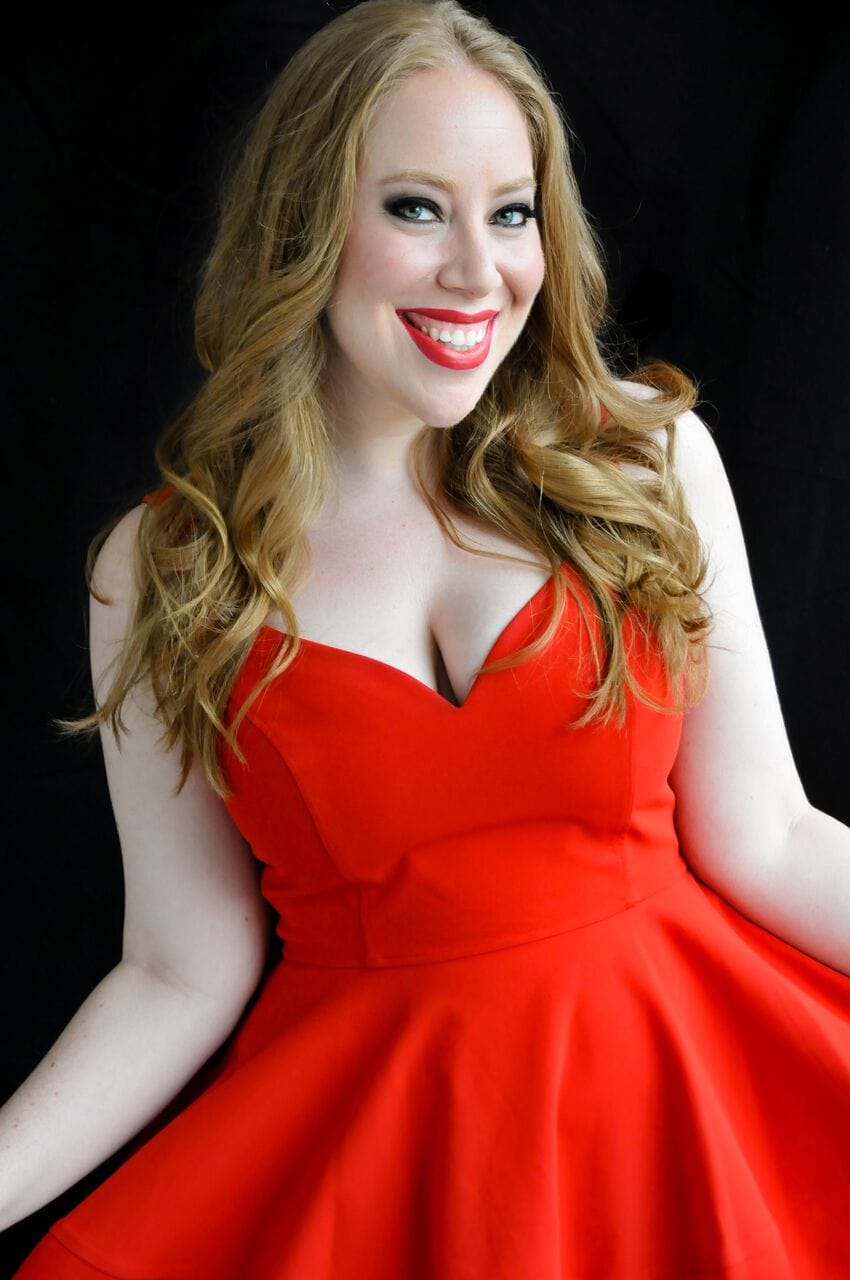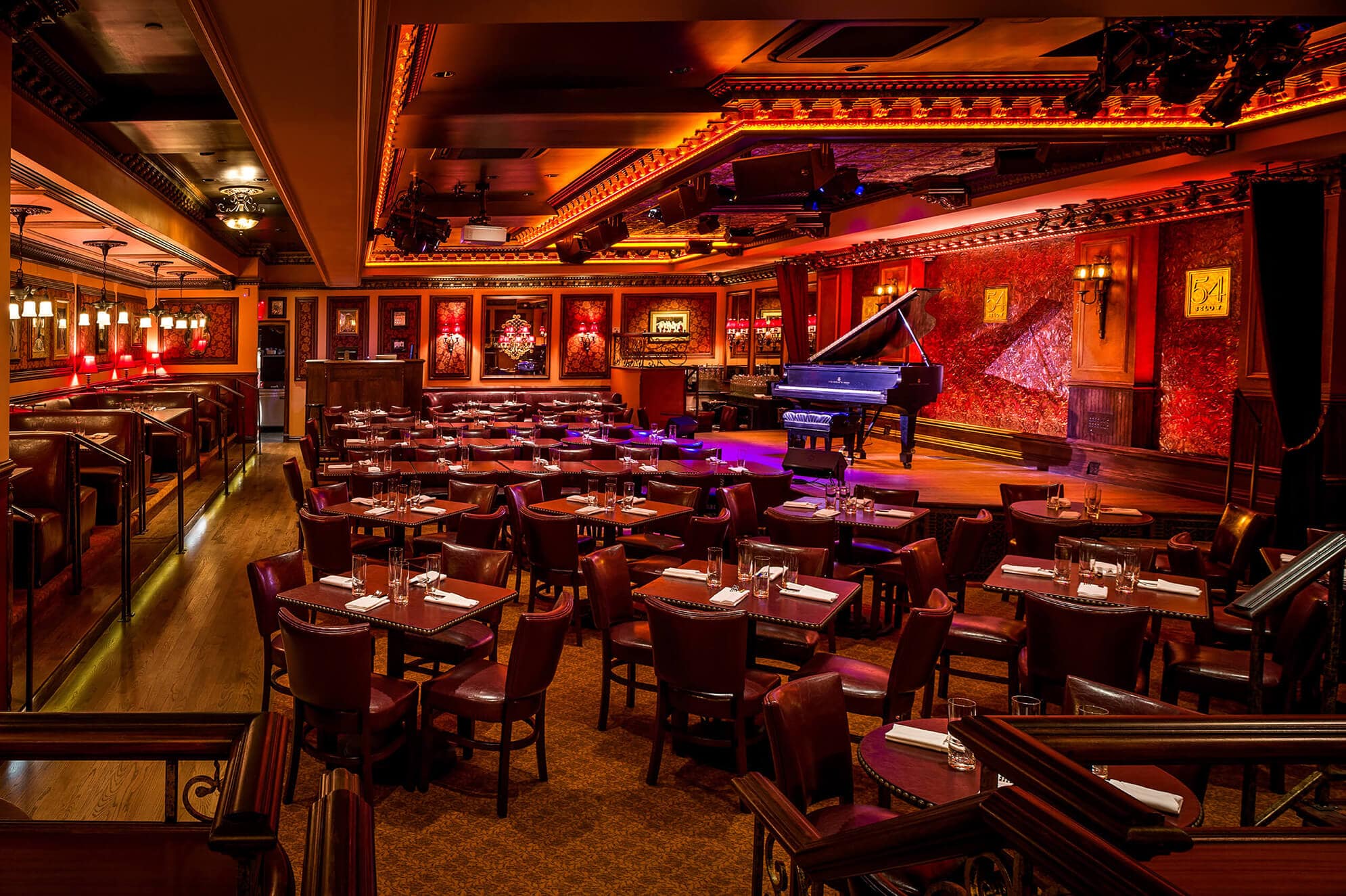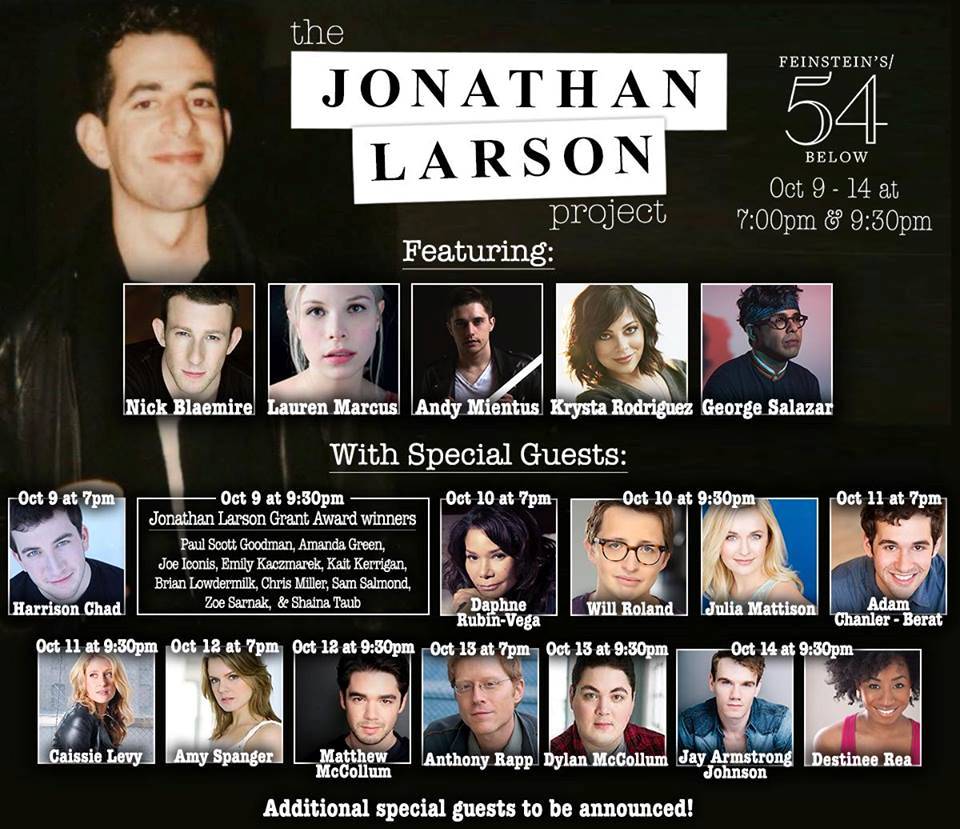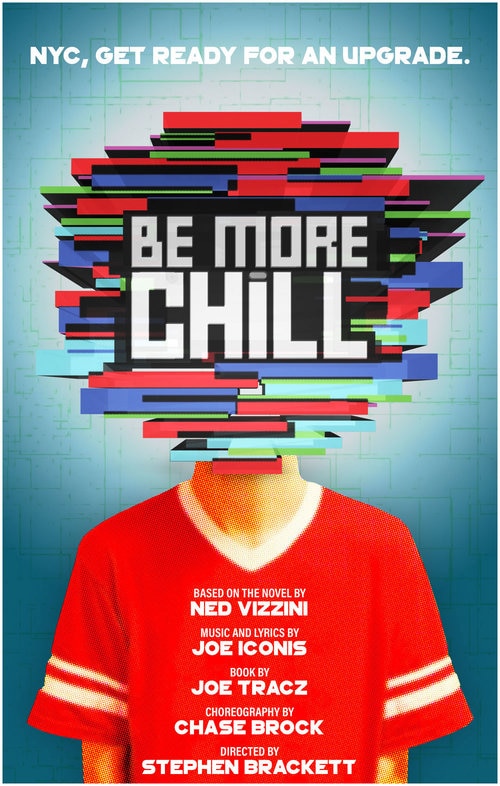Currently the Creative and Programming Director at Feinstein’s/54 Below, Jennifer Ashley Tepper has been responsible for curating and overseeing over 3500 shows to date at the world-class supper club, presenting more than a dozen shows every week in the intimate 134-seat venue. The popular performances encompass everything from solo cabaret acts to tribute-concert celebrations of acclaimed songwriters and musical-theater productions, to reunions of stars and emerging talents from Broadway and beyond, including If It Only Even Runs A Minute – a concert series of excerpts from underappreciated short-run musicals, which she created and hosts with The Book of Mormon‘s Kevin Michael Murphy.
In addition to her creative leadership at Feinstein’s/54 Below, Tepper is a noted theater historian and author, whose three-volume series on The Untold Stories of Broadway (published by Dress Circle in 2013, 2014, and 2016) were best-sellers in their genre. And, if that weren’t enough, she is an Associate Producer for Smokey Joe’s Cafe and a Producer for Be More Chill – two of the hottest and best musicals in New York this year, both of which have enjoyed critically-acclaimed smash-hit Off-Broadway runs on 42nd Street, with the latter scheduled to transfer to Broadway in February.
I caught up with Jen to get a look at her flourishing career, her astute taste in musical theater, and her insights into what it takes to forge a path in her chosen profession.

Deb: You have an amazing eye for talent. Are there specific criteria you use in your programming decisions for Feinstein’s/54 Below, in terms of sustaining audience appeal?
Jen: Thank you! My job is really just the grown-up version of what I started doing as a theater-obsessed kid: telling anyone who would listen all of the details about the musical theater I loved, and trying to make them love it too. It’s just that now, instead of playing my Chess CD for my summer camp friends, I get to put Chess on a stage!
As far as sustaining audiences, it’s always my goal to fill our calendar with as many different kinds of theater-centric entertainment as possible. If you want to hear songs from the Golden Age of Broadway, we have a show for you. If you want to check out the hottest emerging writers, we have a show for you, too. Whether you’re interested in seeing the cast of a current show performing together, a reunion concert of an underappreciated musical, or Broadway folks singing a totally different genre of music, we’ve got you covered. I have always loved musicals of the 1920s as much as I love musicals from this season, so I think that manifests itself in a great variety of acts on our stage, which helps us reach different kinds of audiences.
What do you enjoy most about your work as a Creative Director?
I love having the opportunity to create performances that people will treasure and remember and be changed by – both the people on stage and those in the audience. I love that at our venue, we often present a totally different experience each night, which makes each show even more special. I love getting to work with such a variety of artists – those I grew up admiring and those I’ve come up with and are part of my own generation. I love facilitating new collaborations. I love getting to be there for the beginnings of individual careers and the beginnings of the life of new musicals. I love getting to share the songs that resonate so much with me with other people. I love our staff and our regular artists and the fact that Feinstein’s/54 Below feels like a community staple and a place that brings people together.

Can you give us a sneak peek at some of the exciting programs audiences can look forward to this fall?
I’ve been spending a lot of time working on The Jonathan Larson Project, which I conceived and am directing. Our performances are October 9th through the 14th at 7:00 and 9:30 each night. The show is a song cycle of the unheard work of Jonathan Larson, best known for writing Rent and tick, tick . . . BOOM! His work has impacted me so deeply, and I’ve been researching in order to create this piece for about five years.
There are 30 rare Jonathan Larson songs in the show – seventeen that will be performed every night by the amazing core cast of stars: Nick Blaemire, Lauren Marcus, Andy Mientus, George Salazar, and Krysta Rodriguez – and then thirteen songs that special guests are all popping in to sing at different performances. Almost all of these are works of Jonathan’s that I found during many visits to the Library of Congress, where I went through thousands of files of all of his unproduced musicals, demo tapes, lyric drafts, and so much more.
I’ve been collaborating with Charlie Rosen as music supervisor and orchestrator to turn these discoveries into a live performance. He is a genius at taking a decades-old piano-only demo tape, and the context and dramaturgy I share, and transforming these into fully orchestrated and arranged works that are true to both Jonathan’s intentions and to the overall goals of the new piece we’re creating. The songs themselves are thrilling: they are political, they are personal, they are uplifting, they are devastating. I am so unbelievably excited to present The Jonathan Larson Project to an audience for the first time so soon!
Like most professionals in the arts, you’ve done, and continue to do, a significant amount of freelance work. What are the challenges and benefits of maintaining such an active schedule outside of your main position?
To be honest, it’s been a challenge recently for me to be 100% present in whatever I’m working on. Because the only way for me to be making so many projects happen at the same time right now is often to be typing an email about one while on the phone about the other while halfway out the door to a meeting about the third while cataloguing information about a fourth, my brain doesn’t want to zero in on one thing only, even in the times when that would be ideal. It’s something I’m truly working on, and know I could be better at.
What’s your first creative memory, the earliest one from your childhood in Florida that would ultimately inspire your journey to New York, to pursue a career in theater history and musical theater?
When I was seven years old, I remember getting to see the local JCC theater-camp production of Peter Pan, and when I was eight they did The Wizard of Oz. I could tell you where I was sitting in the auditorium for each. I was transported. Then when I was nine I actually got to go to the camp, and to be in Annie. I played Drake the Butler. I wore a grey wig and my lines mainly consisted of “Yes, sir!” spoken in an inexplicably bad British accent. That was it.
Is there one lesson you learned or recurrent theme you saw in your extensive research and interviews for your books on the history of Broadway theaters?
So many Broadway artists have done the exact same things in the exact same spaces, many years apart, without knowing it. And I don’t mean that both George S. Irving and Heidi Blickenstaff have stood in the same spot on stage at the St. James and belted out a number, although they did, 60 years apart, and I got to interview both of them about it. I mean that the traditions of making art in these theaters creates unique physical patterns: actors at the Neil Simon and August Wilson holding up signs to each other across the street since those houses directly face each other, the companies at the Broadhurst and Schoenfeld traveling back and forth to visit each other via secret tunnel, stagehands of different generations experiencing the ghosts at the Belasco and writers of different generations watching their shows from the same perch at the Winter Garden. What other industry has this kind of magic?

How did you become involved in the production of Be More Chill and Smokey Joe’s Cafe?
I’ve been collaborating with Joe Iconis [who wrote the music and lyrics for Be More Chill] for a decade now, on all of his musicals and concerts and other projects. His work excites me more than any other musical-theater writer, and all I’ve ever wanted to do is share it with other people. The opportunity to team up with the terrific Jerry Goehring in order to bring one of Joe’s musicals to commercial Off-Broadway in a major way was thrilling. On Be More Chill, I feel like I’m getting to utilize everything I know from my long collaboration with Joe, as well as everything I’ve learned from producing other shows on and off Broadway, all synthesized on one production. It’s the first commercial New York production on which I am a full-fledged Producer.
I always knew that Joe and I and our Family of collaborators were planting seeds with different projects and that eventually, the right combination of circumstances would pull together to allow us to explode onto the New York theater scene like this. The circumstances of Be More Chill being brought back to life because people genuinely responded to it all over the world, and listened to it and loved it in unprecedented numbers, feels unbelievable – but also exactly right. We’re so excited now to bring Be More Chill to Broadway – and for all of the other Joe Iconis musicals that will be coming next!
On Smokey Joe’s Cafe, I have been so lucky to work with Richard Frankel, Tom Viertel, and Steve Baruch, who in addition to being legendary Broadway producers are also the intrepid owners of Feinstein’s/54 Below. I have the privilege of being involved in their theatrical projects as an Associate Producer and have learned so much from them. Smokey’s is an incredible show, and I have been lifted out of my seat every time I’ve seen it. Our cast brings every song to life with such energy, intelligence, and absolute joy – the production has been a thrill to be a part of.
What has been the greatest personal reward you’ve experienced as a result of Be More Chill’s phenomenal popularity?
I have believed so hard in this collective of artists, The Family, and the musicals we’ve been making for so long. Now we’re finally being recognized and getting to put Joe’s work out there in the world in a big way – and it’s together, on a show we love, that we built with blood, sweat, and tears, and which got there because The People genuinely responded to it.
The greatest personal reward has been this pit of knowledge inside me that knows this is only the beginning – that in addition to Be More Chill, the world is going to get new productions of Bloodsong of Love and Broadway Bounty Hunter and Love In Hate Nation and The Black Suits and The Untitled Unauthorized Hunter S. Thompson Musical and all of the other Iconis musicals in various stages of development or in various stages of dreaming in Joe’s head. They just are. I know this moment from the history books, and this is the moment when a new chapter begins.
I don’t know anyone more talented, more original, more loyal, or more persistent – and that those traits of Joe’s, and of our Family of collaborators, are finally being appreciated by the world at large is my greatest personal reward.
What do you consider the most important qualities to achieve success in the kind of work you do?
Talent, originality, loyalty, and persistence are pretty important, I suppose! So is an ongoing commitment to learning; always be reading, always be observing, always be getting hands-on experience, always be gathering new knowledge about the art form and its many facets. Reach out to other generations; pay attention to the artists who come both before and after you. And of course, the number one rule: don’t ask anyone’s permission – just do the thing.
Thank you, Jen; I can’t wait to see what you’ve got up next for us!
Thank you so much for the opportunity to chat!
The Jonathan Larson Project plays October 9-14, at Feinstein’s/54 Below – 254 West 54th Street, NYC. For tickets, call (646) 476-3551, or purchase them online.
Smokey Joe’s Cafe plays an open-ended run at Stage 42 – 422 West 42nd Street, NYC. For tickets, call (212) 239-6200, or purchase them online.
Be More Chill plays an open-ended Broadway run beginning on Wednesday, February 13, 2018, at the Lyceum Theatre – 149 West 45th Street, NYC. For tickets, call (800) 447-7400, or purchase them online.








Will there be another volume of Untold Stories of Broadway? Inquiring minds what to know.
Yes, Jen tells me there will eventually be six volumes, but no release dates have been set yet for the next three.